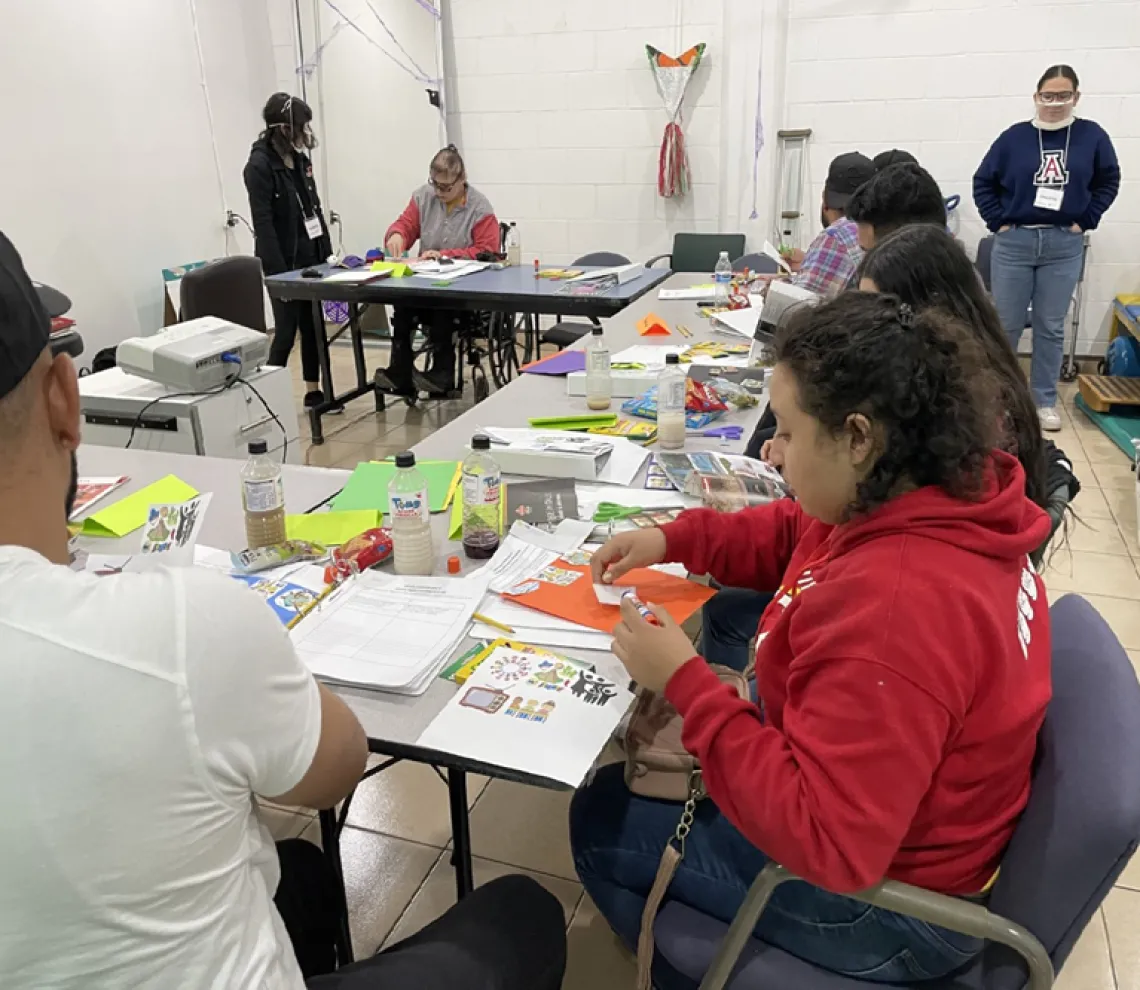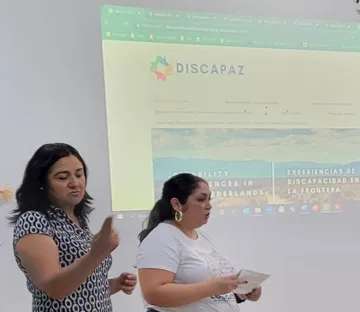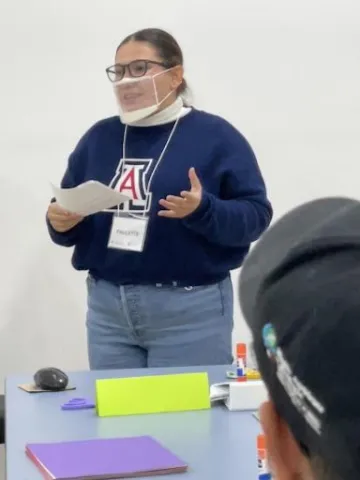Innovative Multimedia Research Project: DISCAPAZ Launches Website

By Drew Milne
In 2022, the Sonoran Center for Excellence in Disabilities received one year of funding from the University of Arizona Libraries Digital Borderlands Initiative, a three-year grant project funded by the Andrew W. Mellon Foundation to develop DISCAPAZ: Disability Experiences in the Borderlands. The UArizona Libraries’ goal is to produce and disseminate new, open-access humanities scholarship on the US–Mexico borderlands by integrating library services into a collaborative research process that emphasizes data-intensive, digital storytelling.
DISCAPAZ: Disability Experiences in the Borderlands is a multimedia project aimed at elevating the voices and narratives of individuals with disabilities and their families living along the Arizona-Sonora border. The project team works with people with disabilities and helps them to tell their stories in the way they see fit, utilizing photos, videos, audio, and written word. Participants during the inaugural year created scrapbooks and made videos to share their stories.
DISCAPAZ shares digital stories of resilience. Community members tell us about who they are, their experiences, and communities in the borderlands. These stories are co-created by community members and university students.
In the first year of the DISCAPAZ project, the Sonoran Center collaborated with the Mariposa Community Health Center, a federally qualified health center, and Southern Arizona Autism Association in Nogales, Arizona. They also worked closely with ARSOBO – Arizona Sonora Border Projects for Inclusion, a binational non-profit organization that provides low-cost durable medical equipment, hearing health, and therapeutic services, based in Nogales, Sonora.
In collaboration with ArtWorks staff, the team hosted scrapbooking workshops in English and Spanish that support people with disabilities to develop a concrete, visual personal information book containing important elements of their lives, with which they can expand their connections and navigate their life more independently. Participants explored their ideas, needs, and wants using various artistic mediums and forms of expression (e.g., drawings, photos, logos/symbols, gestures, etc.).
DISCAPAZ allowed the Sonoran Center to launch a new Borderlands track for its Diversity Fellowship program to focus on the experiences and issues important to individuals with disabilities and their families living along the Arizona-Mexico border. The Borderlands track partners with University of Arizona departments and community organizations to engage Hispanic/Latine students across disciplines and all levels of study at the university. The inaugural cohort included two undergraduate and two graduate students for a yearlong fellowship. All fellows are native Spanish speakers and assisted in development and translation of workshop materials, co-creating digital stories with community members, and conducting research.
Paulette Nevarez is a Sonoran Center diversity fellow and a team member on the project.
“With the project what we hope to do is bring awareness to the different stories within the disability community on the Arizona-Sonora border,” Nevarez said. “...that gives an insight as to what is needed for self-advocacy, how we can become better allies, and showing the resilience of the disability community on the AZ-Sonoran border.”

The DISCAPAZ project recently launched its much-anticipated website. On the website, which is available in English and Spanish, visitors can watch the digital stories, learn about the scrapbooking workshops, read about project updates and coverage of the project from other outlets, and more.
The unique multimedia format serves multiple purposes. Firstly, it is an accessibility feature. Those who might have language challenges which make expressing oneself verbally or in writing difficult can still express themselves through scrapbooking.
Beyond accessibility, the different formats allow people to tell their story in the way that they would prefer it to be told. This makes the process of telling one’s story more welcoming to people who may otherwise feel discouraged or hesitant. The project team worked carefully to create a welcoming, supportive environment.
As Nevarez explained, “I think it gives everyone an opportunity to tell their stories the way they like to. We’re all different and we all think differently. Some people enjoy reading, some like watching movies, others like looking at pictures. It comes down to how everyone wants their story to be told and be able to have that option. [That way], I think you feel more in control of your own story and more comfortable with how your story is being presented to the world. There were some participants who did not want to talk at all throughout their stories, and others who narrated the whole video. It was very important to respect those decisions, because our stories are so personal.”
The Sonoran Center Diversity Fellows, like Nevarez, played a crucial role in the project.
“We translated some of the workshops so that they were accessible to both communities. We also helped by going to the workshops and providing any support that was needed throughout,” Nevarez said.
“From there,” Nevarez continued, “after the scrapbooks and helping them with pictures and questions, we then turned to the videos. We got to work with [the participant] one on one. The person we worked with would tell us everything they wanted to say, or if they didn’t want to say anything at all, the route they wanted their story to go into. Then, they provided the pictures. We put it together, we sent it for revision with them, and they would approve or say, ‘change this, change that’,”

Discussing the ways in which the project team worked with the participants, Nevarez pointed to a simple metaphor illustrating the relationship:
“They were the directors, and we were just the producers. They were the directors of the whole movie,” Nevarez said.
Looking back, Nevarez emphasized how DISCAPAZ provides a special opportunity to establish relationships and work closely with communities in the borderlands.
“I think my favorite part is working with the community. In a lot of research projects, you don’t have that one on one with participants and I think that’s one of my favorite parts of DISCAPAZ,” Nevarez said. “I’m so grateful for them and very thankful to have the opportunity to be part of their community. It made me realize why I want to go into my career and why I’m part of research projects like this one.”
Looking ahead, the project is looking to continue its efforts into 2024 and beyond. The project team is looking to expand its efforts to more communities along the border over time.
DISCAPAZ is also looking for more people with disabilities in the Arizona-Sonoran borderlands to tell their own stories. If you would like to share your story or engage with DISCAPAZ as a community partner or a University of Arizona student, please contact the project coordinator, Celina Urquidez at celinau@arizona.edu.
